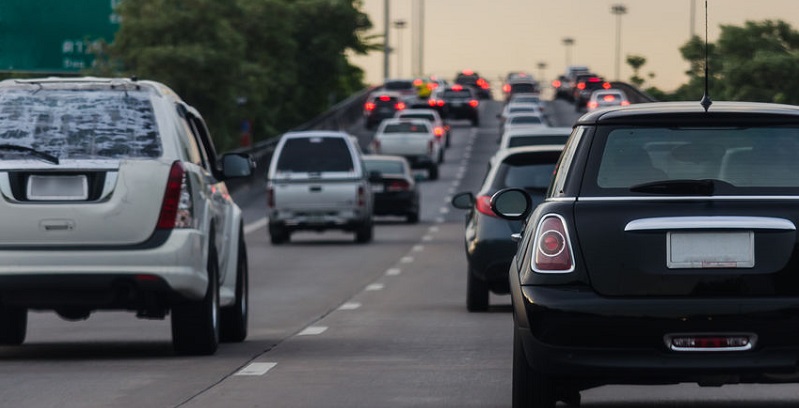In an effort to reduce tailgating accidents, Colorado officials recommend staying a full three seconds behind the car in front of you, regardless of how fast you are traveling.
Increase in Auto Accidents in Colorado Work Zones
Due to a marked increase in collisions, the Colorado State Patrol and the Department of Transportation have decided to boost traffic law enforcement along the 18-mile road expansion project on I-25 between Monument and Castle Rock.
According to the CDOT, a total of 230 accidents occurred in the 12 months before construction began on the so called “Gap” project in September 2018. After work began, total collisions along the stretch rose to 388. Approximately 66 percent of the 388 accidents reported occurred when a motorist rear-ended the car they were following, usually because they were speeding, tailgating, or sometimes even both. Completion of the Gap construction project is expected in 2022.
To alleviate the situation, CDOT and the State Patrol are implementing new rules to keep drivers from speeding, following too closely, and causing accidents along this heavily traveled section of roadway, including:
- Increased aerial tracking to detect speeding vehicles from above
- Lower rush-hour speed limits in the area — from 60 miles per hour down to 55, with the potential to lower them further as warranted by weather or traffic conditions
- Drivers clocked traveling in excess of 100 mph will automatically be assigned a court date, and typical speeding offenses will result in fines of hundreds of dollars.
Narrow lanes, the absence of shoulders on the highway, and distracted driving are also considered to be factors in the increase of auto accidents along the narrow corridor.
What is tailgating?
Tailgating — following another vehicle too closely — is considered aggressive driving in Colorado. One reason for its prevalence in Colorado might be the state’s somewhat ambiguous “Following Too Closely” law, which reads, “The driver of a motor vehicle shall not follow another vehicle more closely than is reasonable and prudent.”
According to one Greeley Tribune article, law enforcement officers are sometimes hesitant to give tickets for tailgating because the law does not precisely define “reasonable and prudent” following distances. After all, would it make sense to have speed limits signs reading, “Don’t drive any faster than what is reasonable and prudent”?
The Three-Second Rule
Colorado recommends following the three-second rule: staying a full three seconds behind the car in front of you, no matter what speed you are traveling. As your speed increases, the distance between you and the car in front of you must also increase to leave the required three-second gap. Experts say if you are driving at night or in adverse weather conditions, you should increase this distance to four seconds.
Following too closely doesn’t allow you time to come to a complete stop should the car in front of you suddenly hit the brakes; the faster you are going, the more time you will need to come to a complete stop. For example, if you are traveling at 55 mph, once the brakes have been applied, you would need 228 feet to come to a complete stop.
Tailgating is a dangerous habit. Were you seriously injured in an automobile accident that was caused by a tailgating driver? With decades of experience and offices across the state, Colorado personal injury attorney Dan Rosen has settled over $100 million dollars in claims for his clients. Schedule your free initial consultation by calling (303) 454-8000.

